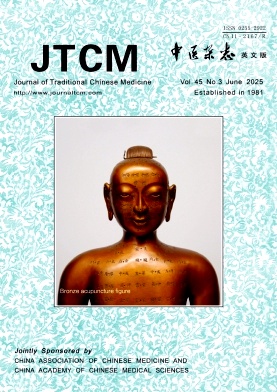| 投稿方式:官网投稿 |
- 栏目频次
- 单位占比
-
热词

高频栏目
中频栏目
低频栏目
-
更多
期刊简介
- 《中医杂志(英文版)》(双月刊)(Journal of Traditional Chinese Medicine),创刊于1981年,由中华中医药学会和中国中医科学院主办。内容以报道中医药基础、临床研究成果和科研前沿进展为主,覆盖中医药学科各个领域。栏目包括基础研究、临床观察、中药研究、循证研究,思路与方法、综述等。
-
基本信息
- 期刊名称:中医杂志(英文版)(Journal of Traditional Chinese Medicine)
- 主管单位:国家中医药管理局
- 主办单位:中华中医药学会、中国中医科学院
- 国内刊号:CN 11-2167/R
- 国际刊号:ISSN 0255-2922;EISSN1577-7014
-
- 出刊日期:
- 期刊定价:
-
- 邮发代码:
-
- 所在省区:北京
- 邮政编码:
- 联系地址:
-
投稿信息
-
- 学科分类:中国医学
- 版面费用:待核实
-
- 字数要求:10000-28000
- 查重要求:-
-
- 复合因子:1.25
- 综合因子:0.975
-
- 审 稿 费:待核实
- 稿费:待核实
- 本刊可发:
- 特殊属性:第一批认定学术期刊
-
联系方式
- 投稿网址:http://www.journaltcm.com/
- 官网网址:http://www.journaltcm.com/
- 电话传真:010-64089189,64089190(官网)
- 电子邮箱:jtcmen@126.com(202503期)
- 微信公众号:中医杂志英文版(JTCMEN)

